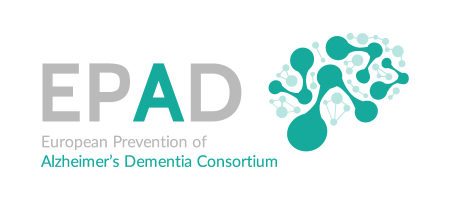“Alzheimer’s disease genetic pathways impact cerebrospinal fluid biomarkers and imaging endophenotypes in non-demented individuals”

Authors: Luigi Lorenzini, Lyduine E. Collij, Niccoló Tesi, Natàlia Vilor-Tejedor, Silvia Ingala, Kaj Blennow, Christopher Foley, Giovanni B. Frisoni, Sven Haller, Henne Holstege, Sven van der van der Lee, Pablo Martinez-Lage, Riccardo E. Marioni, Daniel L. McCartney, John O’ Brien, Tiago Gil Oliveira, Pierre Payoux, Marcel Reinders, Craig Ritchie, Philip Scheltens, Adam J. Schwarz, Carole H. Sudre, Adam D. Waldman, Robin Wolz, Gael Chatelat, Michael Ewers, Alle Meije Wink, Henk J. M. M. Mutsaerts, Juan Domingo Gispert, Pieter Jelle Visser, Betty M. Tijms, Andre Altmann, Frederik Barkhof
Abstract:
Introduction: Unraveling how Alzheimer’s disease (AD) genetic risk is related to neuropathological heterogeneity, and whether this occurs through specific biological pathways, is a key step toward precision medicine.
Methods: We computed pathway-specific genetic risk scores (GRSs) in non-demented individuals and investigated how AD risk variants predict cerebrospinal fluid (CSF) and imaging biomarkers reflecting AD pathology, cardiovascular, white matter integrity, and brain connectivity.
Results: CSF amyloidbeta and phosphorylated tau were related to most GRSs. Inflammatory pathways were associated with cerebrovascular disease, whereas quantitative measures of white matter lesion and microstructure integrity were predicted by clearance and migration pathways. Functional connectivity alterations were related to genetic variants involved in signal transduction and synaptic communication.
Discussion: This study reveals distinct genetic risk profiles in association with specific pathophysiological aspects in predementia stages of AD, unraveling the biological substrates of the heterogeneity of AD-associated endophenotypes and promoting a step forward in disease understanding and development of personalized therapies.
Highlights
- Polygenic risk for Alzheimer’s disease encompasses six biological pathways that can be quantified with pathway-specific genetic risk scores, and differentially relate to cerebrospinal fluid and imaging biomarkers.
- Inflammatory pathways are mostly related to cerebrovascular burden.
- White matter health is associated with pathways of clearance and membrane integrity, whereas functional connectivity measures are related to signal transduction and synaptic communication pathways.
DOI: https://doi.org/10.1002/alz.14096
Published online: 29 July 2024 in the journal Alzheimer’s & Dementia
